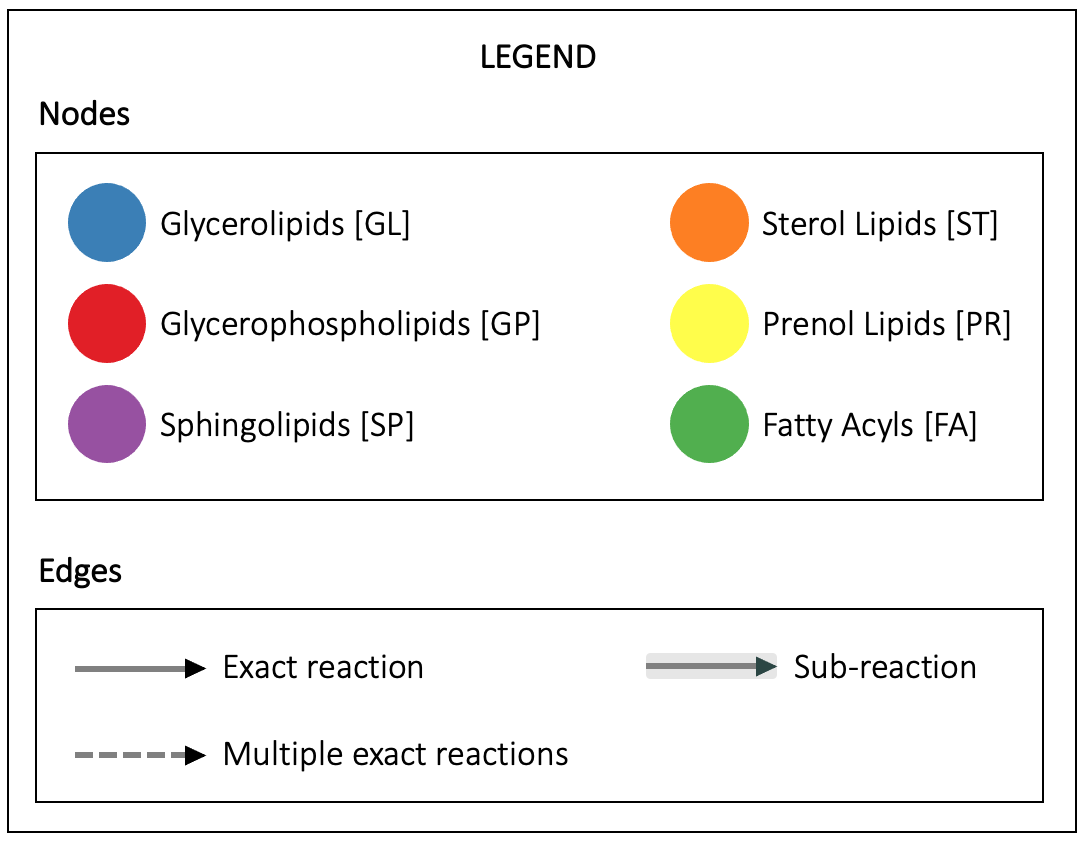Structure Database (LMSD)
Common Name
TG(14:0/14:0/14:0)
Systematic Name
1,2,3-tritetradecanoyl-sn-glycerol
Synonyms
- Trimyristin
- 1,2,3-tri-myristoyl-glycerol
- 1,2,3-tritetradecanoyl-glycerol
3D model of TG(14:0/14:0/14:0)
Please note: Where there are chiral atoms but the stereochemistry is undefined, the 3D model takes an arbitrary conformation
Classification
Biological Context
1,2,3-Trimyristoyl glycerol is a triacylglycerol of myristic acid that is found in nutmeg.1 It has been used to prepare lipophilic and cationic lipophilic micro- and nanoparticles carriers loaded with proteins, peptides, and oligonucleotides.2,3,4 1,2,3-Trimyristoyl glycerol alone and in combination with tyloxapol, has been used as a micro- and nanoparticle carrier of small molecules, including fluorescent dyes, steroids, antiepileptics, antidepressants, NSAIDs, and antifungals.5,6 1,2,3-Trimyristoyl glycerol has also been used as a substrate to determine fatty acid selectivity of lipases.6
This information has been provided by Cayman Chemical
References
2. Christophersen, P.C., Zhang, L., Yang, M., et al. Solid lipid particles for oral delivery of peptide and protein drugs I--elucidating the release mechanism of lysozyme during lipolysis. Eur. J. Pharm. Biopharm. 85(3 Pt A), 473-480 (2013).
3. Christophersen, P.C., Vaghela, D., Müllertz, A., et al. Solid lipid particles for oral delivery of peptide and protein drugs III - the effect of fed state conditions on the in vitro release and degradation of desmopressin. AAPS J. 16(4), 875-883 (2014).
4. Jin, S.E., Kim, C.K., and Kim, Y.B. Cellular delivery of cationic lipid nanoparticle-based SMAD3 antisense oligonucleotides for the inhibition of collagen production in keloid fibroblasts. Eur. J. Pharm. Biopharm. 82(1), 19-26 (2012).
6. Karabulut, I., Durmaz, G., and Hayaloglu, A.A. Fatty acid selectivity of lipases during acidolysis reaction between oleic acid and monoacid triacylglycerols. J. Agric. Food Chem. 57(21), 10466-10470 (2009).
Reactions
Filter by species:
ⓘ
Reactions are shown if the E.C. number of the enzyme catalysing it is annotated in the UniProt database for a species belonging to the selected taxonomic class.
Click on an edge to display the reaction(s).

String Representations
InChiKey (Click to copy)
DUXYWXYOBMKGIN-UHFFFAOYSA-N
InChi (Click to copy)
InChI=1S/C45H86O6/c1-4-7-10-13-16-19-22-25-28-31-34-37-43(46)49-40-42(51-45(48)39-36-33-30-27-24-21-18-15-12-9-6-3)41-50-44(47)38-35-32-29-26-23-20-17-14-11-8-5-2/h42H,4-41H2,1-3H3
SMILES (Click to copy)
C(OC(=O)CCCCCCCCCCCCC)[C@]([H])(OC(CCCCCCCCCCCCC)=O)COC(CCCCCCCCCCCCC)=O
Other Databases
Calculated Physicochemical Properties
Heavy Atoms
51
Rings
0
Aromatic Rings
0
Rotatable Bonds
44
Van der Waals Molecular Volume
831.88
Topological Polar Surface Area
78.90
Hydrogen Bond Donors
0
Hydrogen Bond Acceptors
6
logP
14.94
Molar Refractivity
216.52
Admin
Created at
-
Updated at
25th Apr 2022
LIPID MAPS® abbreviations for glycerolipids (GL)
The LIPID MAPS® glycerolipid abbreviations (MG,DG,TG) are used here to refer to species with one, two or three radyl side-chains, respectively, where the structures of the side chains are indicated within parentheses in the 'Prefix(sn1/sn2/sn3)' format (e.g. TG(16:0/18:1(9Z)/18:0). Acyl chains are assumed by default. The alkyl ether linkage is represented by the 'O-' prefix, e.g. DG(O-16:0/18:1(9Z)/0:0), whereas the 1Z-alkenyl ether (Plasmalogen) linkage is represented by the 'P-' prefix, e.g. and DG(P-14:0/18:1(9Z)/0:0).
For Diradylglycerols and Triradylglycerols, it is not always possible to experimentally determine the exact position of radyl groups on the glycerol group. For Diradylglycerols with two different radyl groups, two different structural isomers exist. For Triradylglycerols with three different radyl groups, six different isomers exist.
Instead of drawing all possible structural isomers explicitly for Diradylglycerols and Triradylglycerols, the LIPID MAPS® abbreviation scheme supports the isomeric specification. A suffix containing 'iso' along with the number of possible isomers is appended to the abbreviation (e.g. [iso2],[iso6]) and a single unique LM_ID is assigned. The structure assigned to the LM_ID corresponds to the radyl substitution shown in the abbreviation. An option is provided to display the other isomers in the group.
The [rac] designation refers to racemic mixtures due to substitution at the sn1 and sn3 positions of glycerol.
The LIPID MAPS® glycerolipid abbreviations (MG,DG,TG) are used here to refer to species with one, two or three radyl side-chains, respectively, where the structures of the side chains are indicated within parentheses in the 'Prefix(sn1/sn2/sn3)' format (e.g. TG(16:0/18:1(9Z)/18:0). Acyl chains are assumed by default. The alkyl ether linkage is represented by the 'O-' prefix, e.g. DG(O-16:0/18:1(9Z)/0:0), whereas the 1Z-alkenyl ether (Plasmalogen) linkage is represented by the 'P-' prefix, e.g. and DG(P-14:0/18:1(9Z)/0:0).
For Diradylglycerols and Triradylglycerols, it is not always possible to experimentally determine the exact position of radyl groups on the glycerol group. For Diradylglycerols with two different radyl groups, two different structural isomers exist. For Triradylglycerols with three different radyl groups, six different isomers exist.
Instead of drawing all possible structural isomers explicitly for Diradylglycerols and Triradylglycerols, the LIPID MAPS® abbreviation scheme supports the isomeric specification. A suffix containing 'iso' along with the number of possible isomers is appended to the abbreviation (e.g. [iso2],[iso6]) and a single unique LM_ID is assigned. The structure assigned to the LM_ID corresponds to the radyl substitution shown in the abbreviation. An option is provided to display the other isomers in the group.
The [rac] designation refers to racemic mixtures due to substitution at the sn1 and sn3 positions of glycerol.